How Richard Wagner promoted the 'German feeling'
Alienation and belonging, eros and disgust: The four feelings were central in 19th-century attempts to define identity. Composer Richard Wagner embraced them and made them "German."
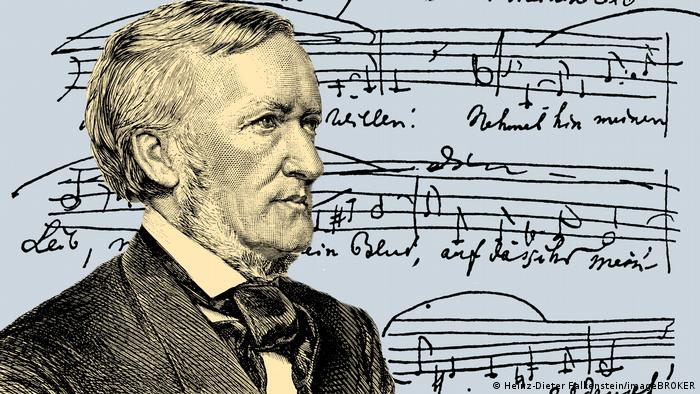
Richard Wagner's influence as the 'inventor of the myth of modernity' is explored in a new exhibition
In a contemporary society that is so quick to "cancel" personalities based on a misplaced comment or action, the enduring popularity of German composer Richard Wagner is part of his appeal for scholars. After all, he was notoriously antisemitic; his writings on Jews and his music were later embraced by Adolf Hitler and the Nazis.
"For better or worse, Wagner is the most widely influential figure in the history of music," writes Alex Ross in his book "Wagnerism: Arts and Politics in the Shadow of Music," which takes a deep dive into the German composer's many-sided cultural legacy.
But his tentacular influence did not only come posthumously.
During his lifetime, Wagner also managed to capture the spirit of his era, and became the "inventor of the so-called myth of modernity," said US-born music historian Michael P. Steinberg, curator of a new exhibition at Berlin's Deutsches Historisches Museum (DHM), "Richard Wagner and the Nationalization of Feeling."
For Steinberg, the title of the exhibition, which translates literally as "Richard Wagner and the German Feeling," refers to two levels of interpretation, the first one being that Wagner taught his audience to "feel" through his musical works; on the second level, he also taught them how to "feel German," by claiming that "the only true music is German."
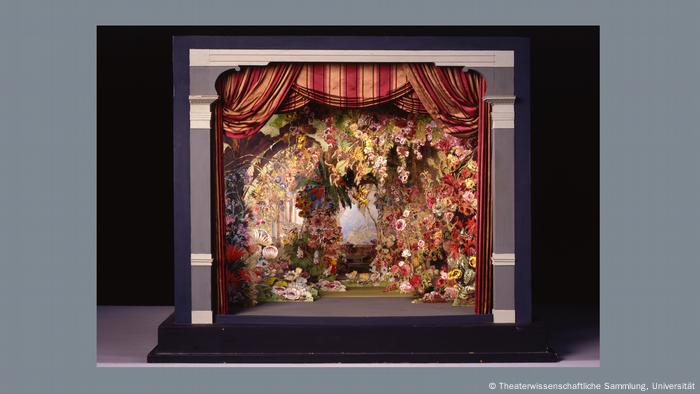
An erotically charged magic garden: a model stage set from Richard Wagner's "Parsifal"
Steinberg also points out that to deal with Wagner today — whether as an opera fan or a historian — means to recognize the composer's creative genius while examining and criticizing his ideology.
With this in mind, the curator picked four feelings that were central to Wagner's work and life, and that also reflected the political and social issues of his time.
Alienation led to revolts
The first feeling, "Alienation," refers to an attitude the young composer developed during his three-year stay in Paris, from 1839 to 1842. There, he decided to reject the traditions of French and Italian opera and focus on developing a new German operatic tradition.
European society of the 1830s and 1840s also expressed its dissatisfaction with the prevailing power structures. It was an era marked by upheavals and revolutions.
Even though Wagner's musical dramas are set in a mythical and distant past, the exhibition points out that the works produced before 1848 "can be understood as an expression of the current revolutionary spitfire."
For example, his characters in the operas "The Flying Dutchman" and "Lohengrin" are roaming outsiders, who hope to escape society's narrow-mindedness.
Another event demonstrates how Wagner's actions merged with the social pulse of the time is the Dresden May uprising in 1849. Its participants hoped to revolutionize the conditions that prevailed in society.
Artists from the fields of music and theater were also agents of change, and Wagner was among those who took part in the failed revolt. He fled to exile in Switzerland to avoid arrest, where he wrote several essays defining his artistic ideals, all while creating many musical works that established his international reputation.
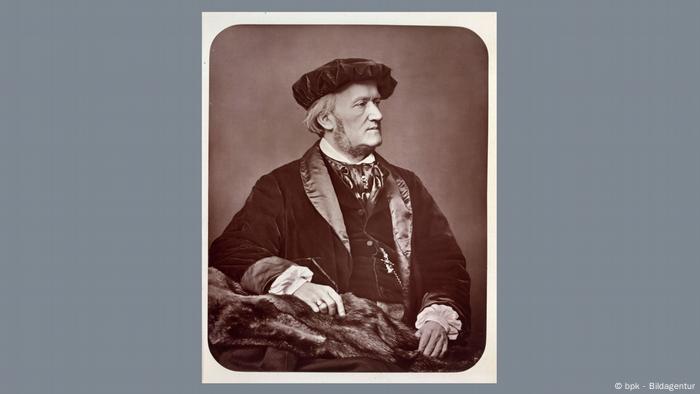
Wagner also established his 'brand' by having several photos taken of him,
such as this one from 1871
Belonging, or defining a German identity
The second feeling examined by the exhibition, "Belonging," looks into Wagner's contribution to the process of defining a German national identity.
After the political ban placed on Wagner was lifted in 1862, he returned to Germany and gained the patronage of Bavarian King Ludwig II .
Following the wars of German unification in the 1860s and the founding of the German empire in 1871, the self-understanding of the nation became a central question in politics, science and the arts.
The composer definitely saw himself as embodying the soul of the country, writing in his diary, "I am the most German being, I am the German spirit."
Wagner's creation of the Bayreuth Festival in 1876 and its opening work, his four-part "Ring of the Nibelung," also expressed the search for the alleged origins of German folktales and myths that would strengthen this national identity.
"Die Meistersinger von Nürnberg" celebrates "what is German and true" particularly through the opera's climax, with the character of master-singer Hans Sachs warning against "foreign mists and foreign vanities."
While Wagner never explicitly defined a character in his works as Jewish, the figure of Beckmesser in this work is seen by many scholars as embodying Wagner's stereotypical and racist views on Jews.
And this work went on to be used as the Nazis' soundtrack, for instance during the inaugural celebrations of the Third Reich in 1933, which adds to its loaded legacy.
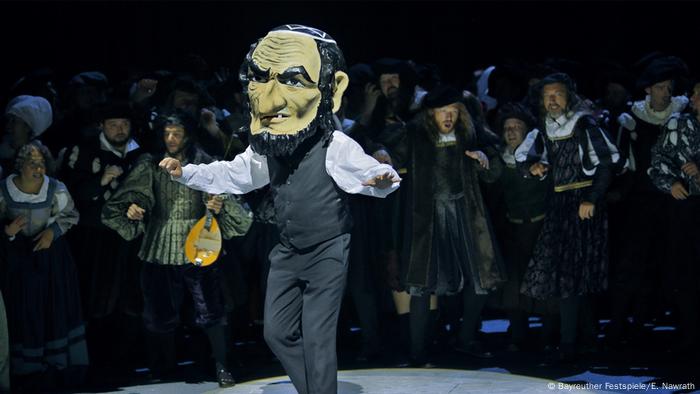
Barrie Kosky became the first Jewish director to stage 'Meistersingers' at the
Bayreuth Festival in 2017, tackling the antisemitic stereotypes head-on
Eros, desiring people and objects
In the section "Eros," the exhibition looks into how desire and possessions were central concepts in Wagner's private life as well as in his works.
The composer had many love affairs, and was also renowned for being a dandy who prized expensive clothes and furniture. Even though he was often in debt, he found sponsors to keep supporting him. Wagner thereby anchored the image of the artist who lives freely, apart from bourgeois conventions.
The composer was however not alone in coveting material comfort. Germany's Gründerzeit, a period of rapid industrialization in the 1850s and 1860s, spurred the population's new desire for luxury and consumption.
And "eros" also refers to the idea of desire, which drives the plot of many of Wagner's music dramas, from the enchantress Lorelei in "Rheingold" to his story of doomed lovers, "Tristan und Isolde."
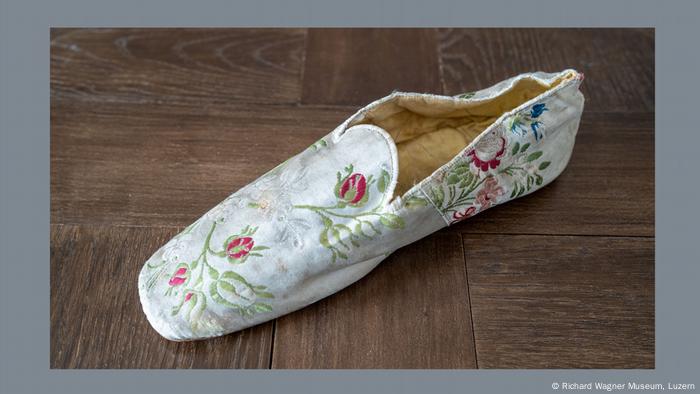
A slipper worn by Wagner shows his taste for fine clothes
Disgust, or the healthy body as metaphor for antisemitism
The feeling of "Disgust" that's explored in the fourth section of the exhibition notes the era's scientific innovations related to knowledge of the human body.
As awareness for hygiene and health grew in Germany, treatments such as water-drinking cures became increasingly popular in the 19th century.
Wagner was among those who regularly went to such spas to cure his various illnesses and find a quiet retreat to create.
But the image of the pure body also served as a metaphor for antisemitism, and Wagner used his influential voice to spread hatred of the Jews. His essay "Judaism and Music" was just one of many of his writings that decried Jewish influence in society and politics.
"You can't take the good Wagner and the bad Wagner separately," says music historian Steinberg.
The composer embodies and reflects Germany's highest achievements, as well as the most unsettling aspects of its identity, which is why there's still more to learn from him by taking a closer look at the controversial figure, rather than by simply canceling him out.
"Richard Wagner and the Nationalization of Feeling" is on show at the Deutsches Historisches Museum in Berlin from April 8 through September 11, 2022.
Edited by: Sarah Hucal
No comments:
Post a Comment